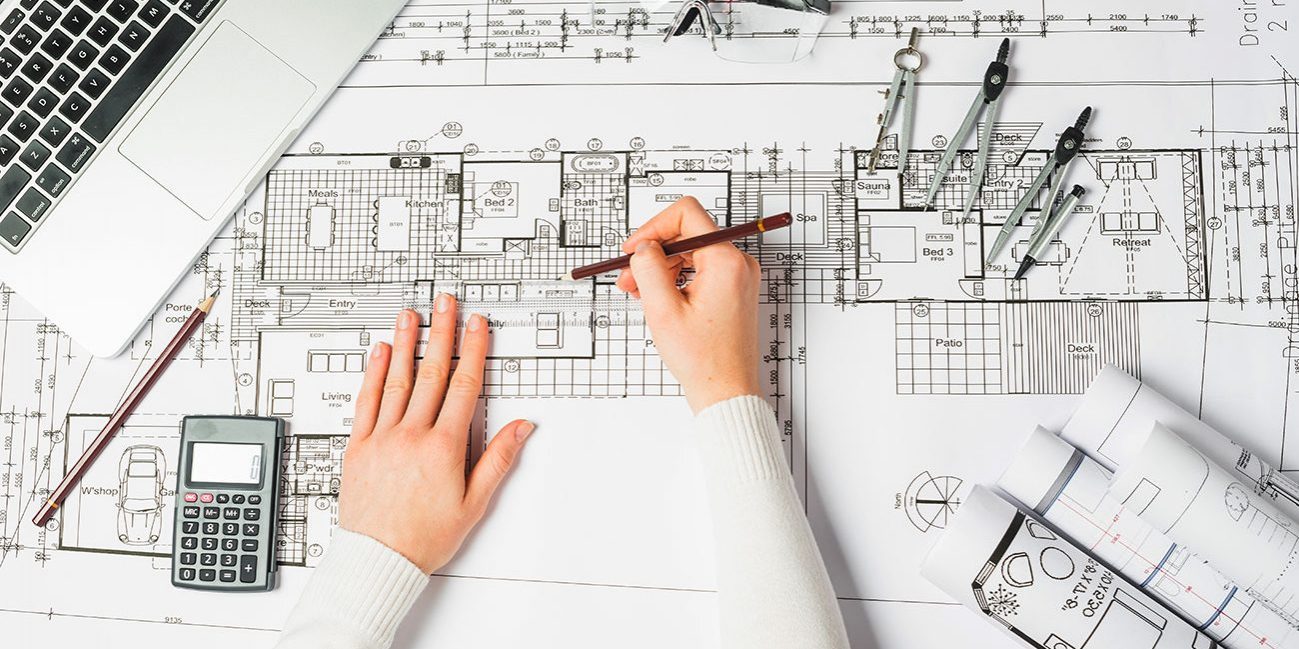Understanding the Diverse Occupation Paths Available for Aspiring Architect
As an aspiring Architect, you have a world of profession courses waiting for you. Whether you're attracted to standard style or the nuances of lasting design, there's a specific niche that lines up with your interests.
Typical Architecture: Creating Structures and Structures
Traditional style focuses on creating structures and frameworks that blend capability with visual appeal. Your layouts can show cultural heritage, showcasing neighborhood customs while meeting modern-day demands.
You'll establish abilities in preparing, model-making, and site evaluation, allowing you to imagine and connect your concepts successfully. Involving with clients, you'll need to comprehend their vision and translate it into viable designs.
Moreover, building codes and sustainability methods are vital in your work, ensuring your frameworks are secure and ecologically pleasant. As you grow in your job, you'll locate opportunities in household, commercial, or also repair tasks, each offering distinct obstacles. Accepting typical architecture leads the way for a meeting profession that admires the past while shaping the future.
Urban Preparation: Shaping Neighborhoods and Public Spaces
As an aspiring Architect, you can play an important role as a city planner, transforming how areas operate and communicate. By using area involvement techniques, you'll guarantee that citizens have a voice fit their environment. And also, incorporating sustainable design concepts will certainly help create rooms that not just satisfy today's demands however also shield the future.
Function of Urban Planners
While many may think about architects as the sole enthusiasts behind structures, city organizers play a necessary role in shaping the wider landscape of areas and public rooms. They evaluate land usage, zoning regulations, and community needs to develop sustainable atmospheres that boost quality of life. By collaborating with various stakeholders, you'll help design parks, transport systems, and residential locations that advertise social communication and ease of access. Urban organizers also concentrate on ecological factors to consider, ensuring that growths integrate environment-friendly rooms and support biodiversity. Your knowledge in spatial style and community dynamics allows you to picture future growth while preserving cultural heritage. In this essential function, you'll directly affect just how individuals experience their environments, making every task an opportunity for positive change.
Community Involvement Approaches
Effective area involvement methods are essential for urban planners to ensure that the voices of citizens are listened to and valued in the preparation procedure. To promote significant discussion, you need to focus on open online forums and workshops where neighborhood participants can share their concepts and concerns. By proactively incorporating and listening responses, you'll produce areas that reflect the area's requirements, eventually leading to even more sustainable and successful urban environments.
Sustainable Design Concepts
When creating metropolitan spaces, including sustainable style principles is essential for creating environments that prosper both environmentally and socially. Take into consideration incorporating green rooms, like parks and gardens, to enhance biodiversity and enhance air quality.
Designing with water conservation in mind is additionally vital-- assume concerning rain gardens and permeable surface areas to manage stormwater. Entailing area participants during the preparation process warranties that the rooms you create satisfy their needs and urge social communication. By embracing these concepts, you'll contribute to lively, sustainable metropolitan landscapes that profit everyone.

Landscape Style: Producing Lasting Exterior Atmospheres
As you check out landscape architecture, you'll uncover crucial style principles that produce attractive and practical exterior spaces. Sustainable techniques play a crucial role in making sure these settings flourish while lessening environmental influence. Plus, you'll locate a selection of occupation chances that allow you to make an actual difference in how individuals interact with nature.
Style Concepts in Landscape
Comprehending layout principles in landscape architecture is important for creating sustainable exterior atmospheres that integrate with nature. You'll need to consider elements like equilibrium, scale, and proportion to assure your designs feel cohesive and welcoming. Including native plants not only improves biodiversity but additionally reduces water usage, making your landscape durable. Assume regarding the flow of area and just how people communicate with it; paths and seating locations must welcome exploration and relaxation. Furthermore, pay focus to seasonal adjustments, designing with products that complement the surroundings year-round (Architect). By focusing on sustainability and appearances, you can produce outdoor areas that improve the neighborhood and promote health. Accepting these principles will certainly establish a solid foundation for your career in landscape design.
Lasting Practices Overview
Sustainable practices in landscape design not just concentrate on visual appeals yet additionally prioritize ecological health and wellness and resource conservation. You can develop rooms that advertise dirt health and wellness, such as practicing and using natural materials permaculture principles. Ultimately, these methods ensure your designs benefit both people and the environment for years to come.
Profession Opportunities Expedition
With a solid structure in sustainable practices, landscape design provides a selection of job paths that allow you to make a significant effect on the environment. You can work as a landscape developer, producing aesthetically pleasing and practical outside spaces, or focus on eco-friendly restoration, aiding to restore broken ecological communities. Urban organizers often team up with landscape architects to create environment-friendly areas in city settings, improving city livability. If you're passionate regarding education and learning, think about becoming a landscape design instructor, inspiring future generations. Furthermore, you could deal with nonprofits focused on ecological sustainability or participate in research to innovate new methods. Each course not only forms stunning environments but also cultivates a much healthier planet for future generations.
Lasting Layout: Focusing on Eco-Friendly Practices
As you explore your occupation in architecture, embracing eco-friendly practices can set you apart in an affordable field. a fantastic read Lasting style concentrates on developing structures that reduce environmental impact while enhancing occupant wellness. By incorporating renewable products, energy-efficient systems, and lasting structure strategies, you'll add to a greener future.
Start by getting knowledge of green certifications like LEED or BREEAM, which can bolster your credentials. Think about just how all-natural light, air flow, and thermal effectiveness can enhance style. Work together with designers and ecological specialists to innovate remedies that lower waste and save sources.
Don't forget the importance of area involvement-- interesting neighborhood stakeholders can inspire layouts that integrate with the setting. As customers increasingly focus on sustainability, your experience in environmentally friendly techniques will not only bring in projects yet likewise fulfill your passion for liable style. Welcome this vital facet of the occupation, and see your career grow.
Historic Preservation: Safeguarding and Bring Back Cultural Heritage
While you begin on your architectural trip, take into consideration the crucial role of historic preservation in maintaining our social heritage. This field concentrates on the defense and remediation of considerable structures, websites, and frameworks that inform the stories of our past. By involving in historical conservation, you'll aid protect the building legacy that shapes neighborhood identification.
As a historic preservation Architect, you'll assess historical significance and assess the problem of structures. You'll function very closely with historians and guardians to assure genuine remediation techniques are utilized. This career course enables you to blend imagination with research study, allowing you to create services that respect initial materials and craftsmanship.
Your work not just adds to sustainability by recycling existing buildings but additionally promotes a sense of pride within neighborhoods. Accepting this course will certainly aid you end up being a guardian of background, preserving the stories and appearances that improve our lives.
Interior Style: Enhancing Indoor Spaces
Historical preservation and indoor design both share a commitment to improving the constructed setting, yet they concentrate on different elements. While historic preservation stresses preserving a framework's historic and social value, interior architecture absolutely nos in on optimizing interior spaces for functionality and looks.
As an ambitious Architect, you'll discover that interior design enables you to mix creativity with technical skills. You'll create spaces that not just look great however also advertise comfort and performance. This field entails recognizing just how light, color, and products interact within a space, influencing mood and use.
You'll service various projects, from residential homes to business offices, making certain that each atmosphere meets the demands of its owners. By focusing on individual experience, you can transform interiors into practical and inspiring rooms, making a considerable impact on just how individuals communicate with their surroundings. Welcome the possibility to improve indoor atmospheres and form the way people function and live.
Industrial Layout: Combining Capability With Appearances
Industrial layout plays a vital role in developing products that seamlessly Recommended Site blend looks with capability, ensuring that what you utilize everyday is not just aesthetically enticing however likewise functional. As an ambitious Architect, you could involve yourself in this area, concentrating on developing everything from furnishings to consumer electronics. Your job includes comprehending individual needs, products, and manufacturing procedures, enabling you to create innovative remedies that enhance day-to-day experiences.
In commercial style, you'll often work together with marketers, makers, and designers, making sure that your layouts are not only lovely but also practical. This profession path provides a dynamic setting where creativity satisfies usefulness, making it a satisfying selection for engineers interested in shaping the items of tomorrow.
Often Asked Inquiries
What Educational Accreditations Do I Need to Come To Be an Engineer?
To end up being an architect, you'll need a specialist degree in style, generally a Bachelor's or Master's. In addition, you'll have to complete a teaching fellowship and pass the Architect Registration Exam to practice lawfully.
Are There Qualification Demands for Various Building Job Paths?
Yes, there're accreditation needs for different architectural courses. Architect. great post to read You'll require to pass exams, total internships, and occasionally seek specialized training, depending upon your picked emphasis, like landscape architecture, urban design, or historical conservation
What Software Application Skills Are Necessary for Engineers Today?

Just How Can I Gain Practical Experience While Studying Style?
You can acquire functional experience by interning at architectural firms, participating in design competitors, volunteering for community jobs, or collaborating with classmates on real-world projects. These opportunities boost your skills and develop important links in the industry.
What Work Opportunities Exist Outdoors Standard Design Firms?
You can check out numerous work possibilities outside typical style companies, like metropolitan planning, interior decoration, landscape design, building and construction administration, property development, or perhaps duties in sustainability consulting. Each deals unique obstacles and incentives.
Whether you're drawn to typical architecture or the nuances of sustainable layout, there's a specific niche that lines up with your interests.When making city areas, incorporating lasting design concepts is important for developing atmospheres that prosper both ecologically and socially.As you discover landscape design, you'll find crucial layout concepts that develop gorgeous and useful exterior spaces.Comprehending layout concepts in landscape design is crucial for developing sustainable exterior environments that harmonize with nature.In commercial layout, you'll often team up with marketing experts, designers, and manufacturers, guaranteeing that your styles are not just lovely however also viable.